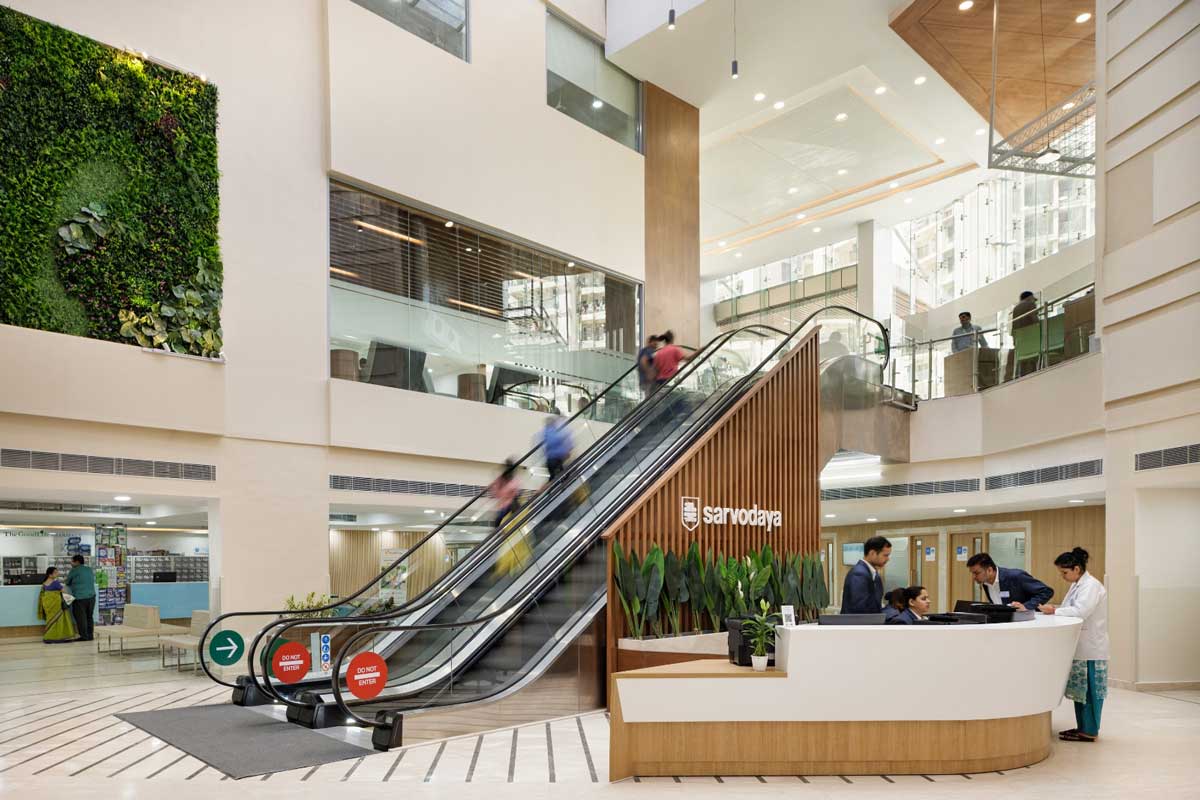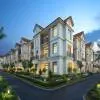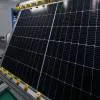The Sarvodaya Hospital in Greater Noida adopted the adaptive reuse concept, which converts old, underutilised buildings for new purposes. Additionally, it has interestingly as per traditional healthcare, and opposed to new-age hospitals, incorporated a greater amount of natural light into the healthcare design to ensure rapid patient recovery. But the question arose as to how the glazing systems helped penetration of usable daylight even while circumventing the resultant heat gain and glare.
CW’s R Srinivasan spoke to Ravideep Singh, Associate Director, Creative Designers Architects (CDA) to also gain details as to how the 300-bed super-speciality was completed in 11 months, reducing construction costs, ensuring a higher return on investment for the healthcare provider, apart from providing high-quality, accessible healthcare for the community...
What was the reason, including advantages, behind choosing this particular design concept?
In the realm of healthcare infrastructure, adaptive reuse has proven to be a game-changer, especially in the post-pandemic era. The growing need for hospitals and care facilities also highlighted gaps in urban healthcare infrastructure, especially in India. For instance, the densely populated urban hub of the National Capital Region, Delhi - Greater Noida, which has a population density of nearly 25,000 people per sq km, had no quality healthcare facility in the vicinity, forcing people to travel to Noida or New Delhi in search of quality clinical care, until last year. Sarvodaya Hospital, designed by Creative Designer Architects (CDA), addresses these gaps in healthcare infrastructure by revitalising defunct urban spaces to create transformative spaces that positively shape the lives of individuals and communities.
Has it successfully been adopted by the company in an earlier project? Please mention details.
Adaptive reuse provides a unique opportunity to improve healthcare accessibility by transforming urban structures into hospitals. Additionally, reusing infrastructure reduces the carbon footprint associated with manufacturing new building materials. Healthcare facilities can contribute significantly to environmental conservation by adapting and enhancing existing buildings.
CDA has repurposed 0.18 million sq ft of retail space into a full-fledged Yashoda Super Speciality Hospital in Kaushambi, Uttar Pradesh. At Paras Hospital in Kanpur the existing structure has been transformed into a state-of-the-art hospital, trimming down the time and cost that typically goes into setting up a healthcare facility of this scale. With strategic interventions, meticulous planning and holistic utilisation of the existing structure, CDA aims to set new benchmarks for contemporary healthcare infrastructure in India.
What were the learning elements in terms of the design challenge and how were they overcome?
Initially conceived as a commercial mixed-use facility, the original structure housed bustling shops on the lower floors, while the upper floors remained vacant office spaces. The planning of this commercial block was a tripartite form – a central node connecting three separate blocks.
The challenge was to design a highly efficient hospital within the constraints of an already operational commercial centre. The compact and disparate blocks presented limitations in terms of connectivity and seamless planning of medical departments.
To address this challenge, these blocks were connected by adding eight-foot-wide corridors at various locations to facilitate seamless transitions and movement for patients, doctors and staff. These corridors were planned along interior courtyards that allow abundant daylight to flood these transition zones, enhance easy access and elevate the overall user experience in the interior spaces.
Mechanical services posed their own set of challenges, particularly regarding heights, which are often inherent in Brownfield projects.
The deck-to-deck height of 3,450 mm and the beam bottom of 2,850 mm on the in-patient department (IPD) floors made the augmentation of ducted fan coil units (FCUs) difficult.
To address this challenge, ducted cassette units offered a more space-efficient alternative to optimise heights and also improve the spatial experience within the hospital.
What is the cost difference between this and a conventional concept?
Many challenges arose, particularly concerning mechanical services and their specific height requirements inherent in Brownfield projects. Ingeniously, implementing ducted cassette units can be a space-efficient alternative to optimise heights and enhance the overall spatial experience within the hospital. This approach was a cost-effective and sustainable way to help cut down on construction time and build community-centric healthcare facilities that improve access to quality care and promote well-being. From a medical planning perspective, existing structures can present limitations in terms of connectivity and seamless planning. It can be challenging to segregate departments and optimise operational efficiency. Architects need to plan with consideration of services, equipment, technology, and medical workflows. Overcoming these challenges requires a collaborative approach involving architects, medical professionals and regulatory bodies.
At Sarvodaya hospital, standardising design elements, such as patient room headwalls, footwalls and wall claddings helped reduce cost and accelerate execution. Drywall construction and adhesive technology for finishes, along with the application of pre-designed systems like PVC panels, wall coverings, and claddings, also helped cut down construction time. A semi-unitised façade system that further helped cut down on construction time was installed within three months. This architectural approach set the hospital apart from the neighbouring residential buildings, creating a distinctive, refreshing aesthetic that defies convention.
Hospital designs rarely pay attention to natural light so could you briefly comment on the connection between natural light and rapid patient recovery.
Research in the field of evidence-based design (EBD) has shown that exposure to natural light has a significant impact on patient recovery and overall well-being. Studies have found that patients in rooms with natural light experience less pain, require fewer pain medications, and have shorter hospital stays compared to patients in rooms without natural light. Additionally, exposure to natural light can improve the circadian rhythm and regulate sleep-wake cycles, which is particularly important for patients who spend extended periods in hospitals.
At Sarvodaya hospital, natural light has been optimised by adding eight-foot-wide corridors at various locations to facilitate seamless movement for patients, doctors, and staff. These corridors are planned along interior courtyards that allow abundant daylight to flood these transition zones and elevate the overall user experience in the hospital's interior spaces. The glass façade allows natural light in the in-patient rooms enhancing recovery and overall wellbeing.
From an architectural perspective, comment on how daylight is balanced with the temperature rise inside hospital rooms.
Incorporating natural light in hospital design is crucial to promote patient recovery and reduce the length of hospital stay. Strategies such as large windows, landscaped gardens, central courtyards, and materials can all contribute to creating a healthcare environment that promotes healing and well-being. By prioritising natural light in hospital design, healthcare providers can enhance the patient experience and create a more positive and healing environment. A holistic design approach centred around user experience along with the strategic use of technology can optimise natural light in patient areas while minimising heat gain and glare.
Incorporating natural light into healthcare design requires balancing competing factors such as heat gain and glare. Innovations in material science have led to the development of glazing systems that maintain visible light transmittance while mitigating heat gain. New glazing systems are available today that can achieve high levels of heat insulation via double- or even triple-glazed units whilst maintaining a visible light transmittance (VLT) in the range of 40-50 per cent, which helps in penetration of usable daylight while circumventing heat gain and glare.
The materials used in hospital design can also improve the amount and quality of natural light. Using light-coloured flooring, walls, and ceilings can reflect and amplify natural light, creating a brighter and more inviting space.
Design of the building
With a strong emphasis on minimising environmental impact, the fit-out works were completed within 11 months, reducing construction costs. The design of these in-patient rooms with larger windows, natural light, panoramic views of the city and muted colour palettes stem from evidence-based design principles to promote the healing and well-being of patients and caregivers alike.
The project serves as a compelling case study for the potential of Brownfield projects, offering high-quality healthcare services to the community and driving positive change. By revitalising defunct urban spaces, we can bridge gaps in healthcare infrastructure and create transformative spaces.




















